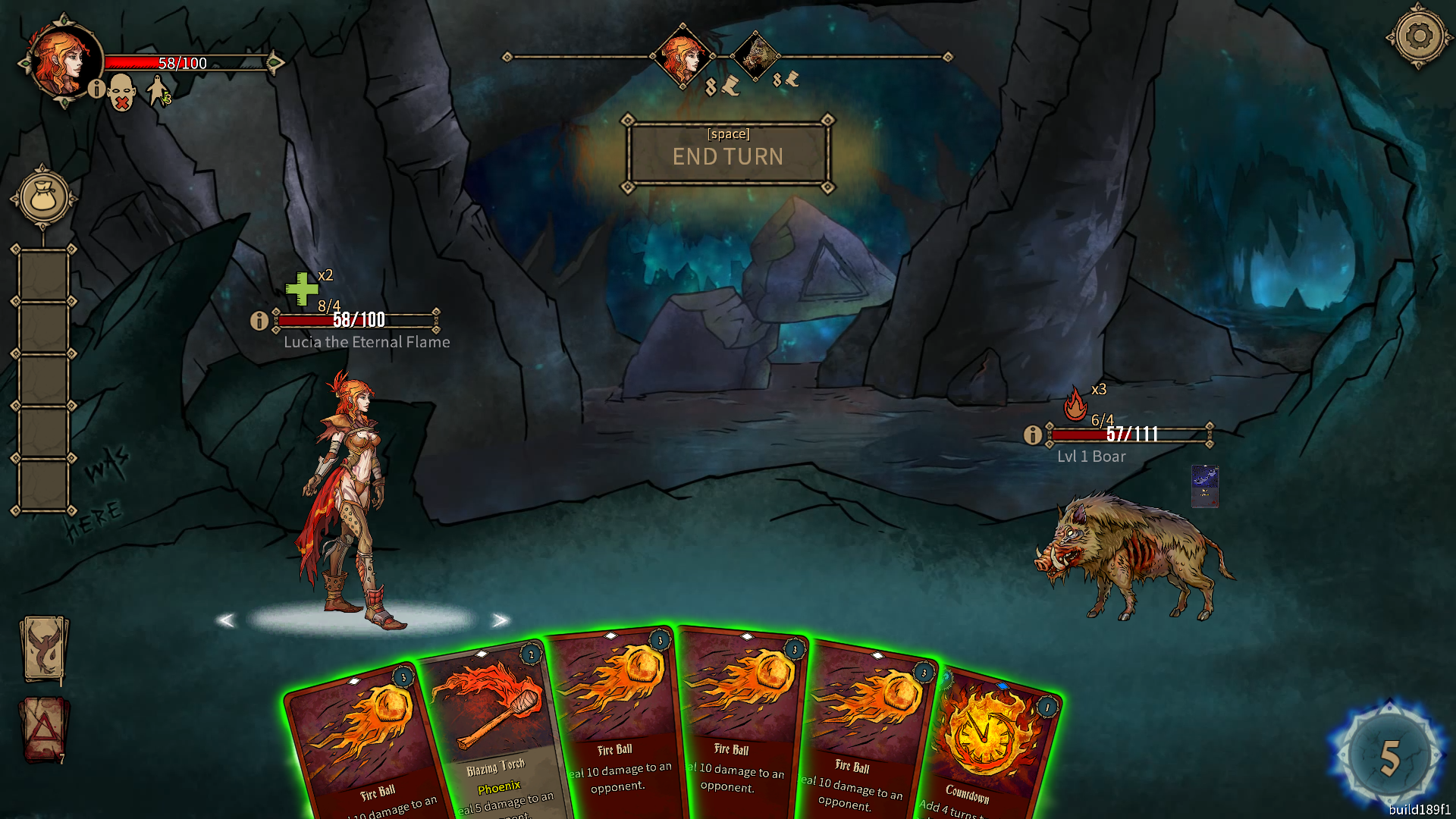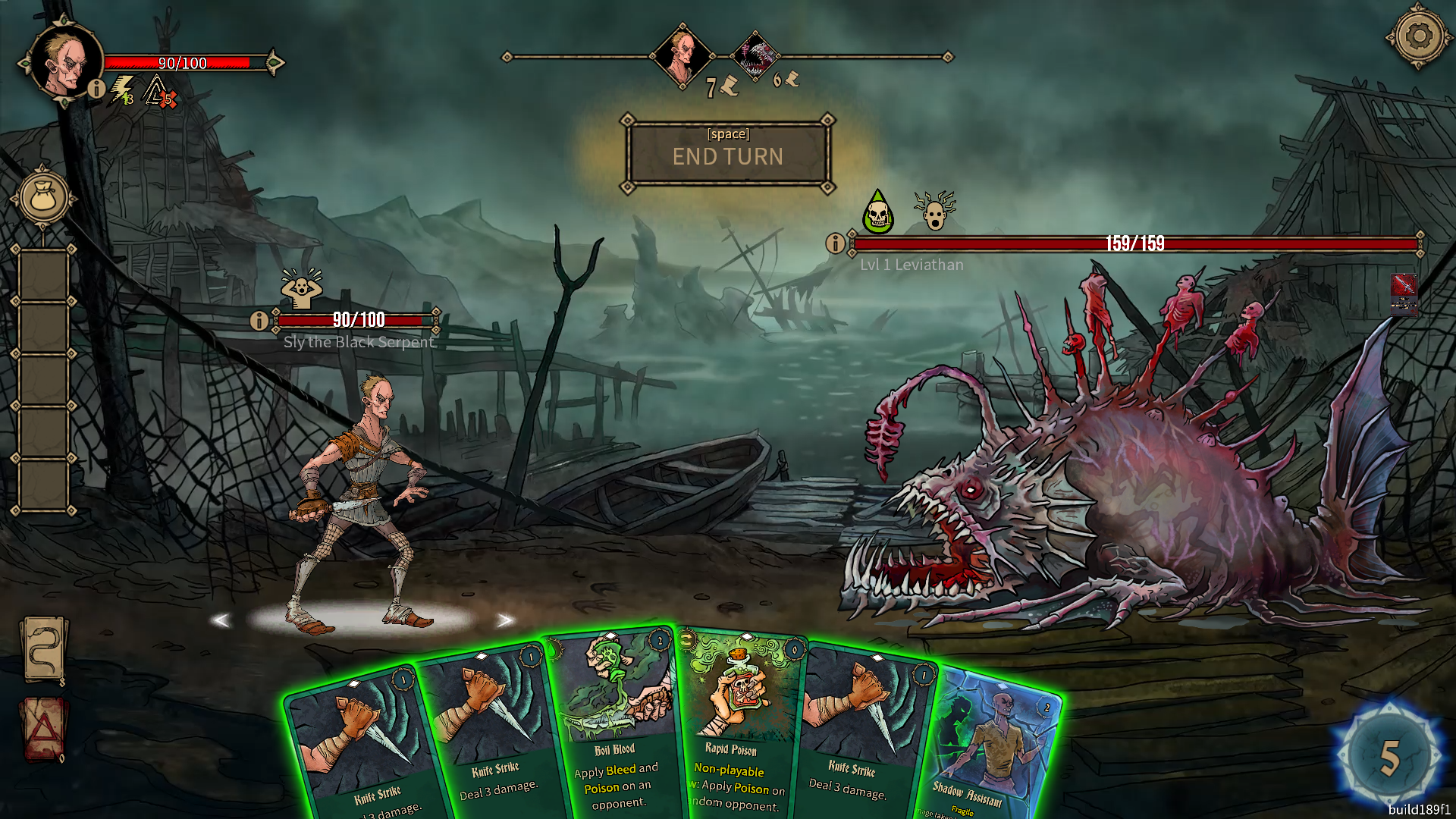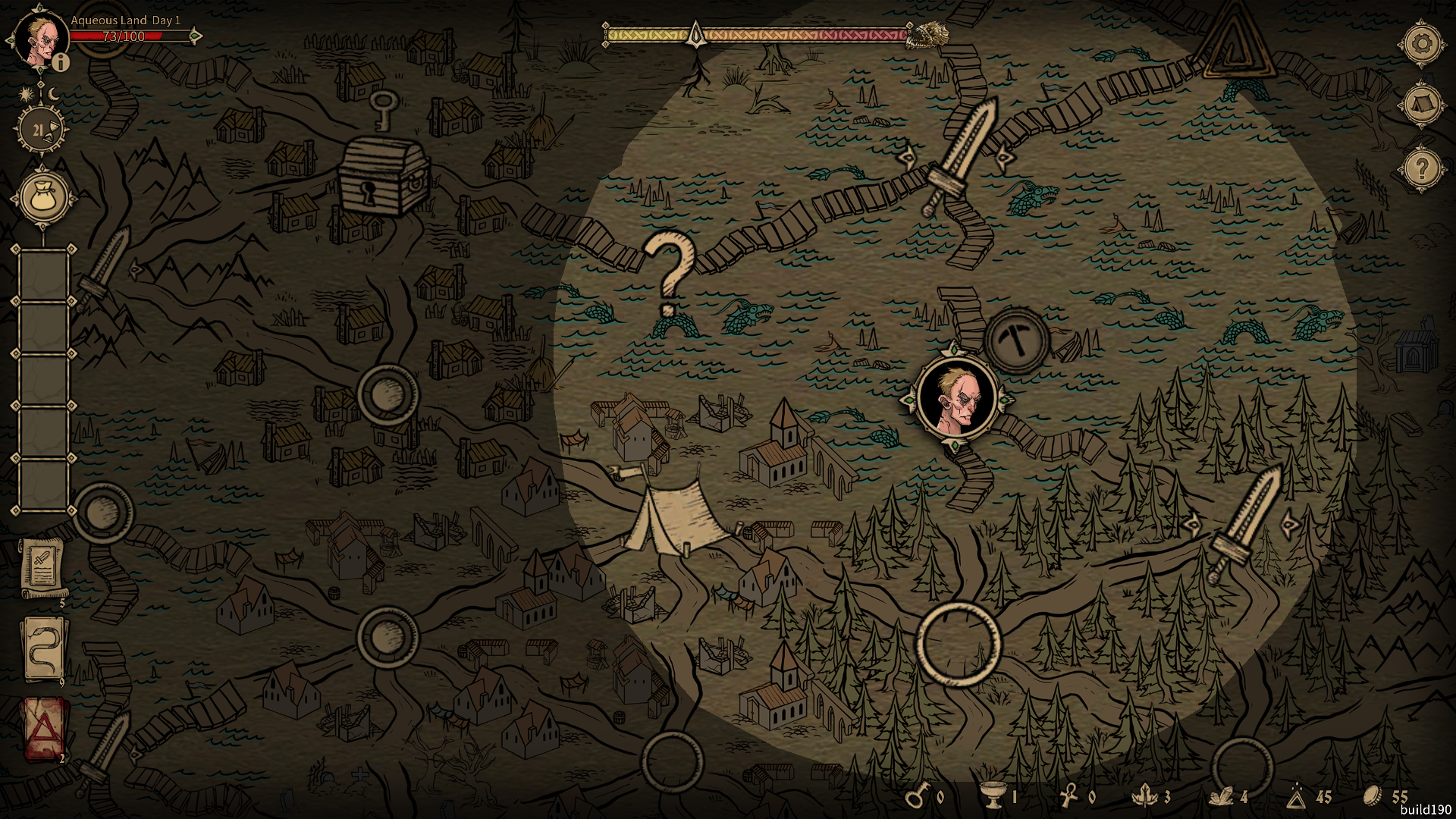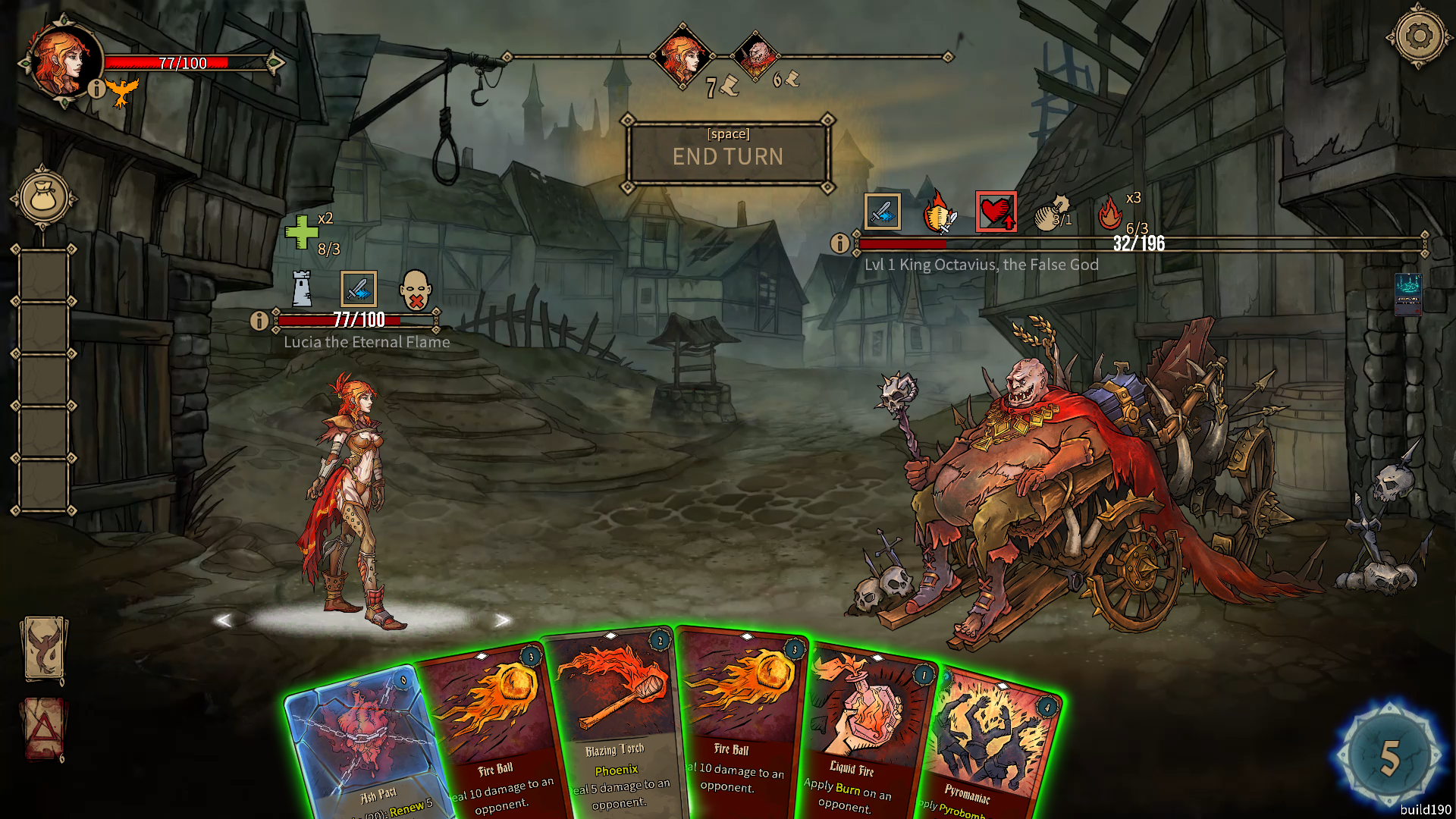Slay the Spire is getting darker
Type: Single-player
Genre: RPG, Card-game
Developer: AYGames
Publisher: AYGames,
WhisperGames
Release Date: 11 Apr, 2019
Overview
When I first saw Deck of Ashes’ Steam page, I couldn’t help but think of Slay the Spire. For those who don’t know, Slay the Spire is a card game where the cards represent the actions and abilities of the character played. The player assembles a deck of cards and fights enemies by using them. This style of gameplay isn’t completely original and lots of different board games use cards to represent actions.
Deck of Ashes capitalizes on the already tested formula of Slay the Spire, adding its mechanics, story and a graphical style that doesn’t ruin my eyesight (it’s very similar to Darkest Dungeon’s).
The world is in ruins
The Ash Box has been opened and now the world is in ruins. This is the simple story that Deck of Ashes portraits. The two playable heroes are what remains of the powerful bandit group that opened the box, cursing everyone, including themselves. The first hero is Sly, an assassin who killed a whole village for revenge, now cursed to hear the whispers of those killed by his hand, while the second is Lucia, a pyromancer burnt at the stake and reborn in the flames, bound to fell the pain of a fire burning in her. Their task: lift the curse that they once unleashed on the world, not for the greater good, but themselves.

Draw, play, discard
While the game is very similar to Slay the Spire, it also introduces some big changes: the first one is the possibility of resting after each fight. In Deck of Ashes every fight brings the possibility of dying, even those with common enemies: the loss of health points is, in fact, very high even during the simplest of battles. This is why the possibility of healing a huge amount of health points has been introduced after each fight.
Another big change is the way the player’s deck works: as opposed to Slay the Spire, here cards are discarded to a special deck (called Ash Deck), where they remain even after the Battle Deck gets finished. When it happens, the player has the choice of either not draw cards anymore, or play the Ash Pact: a special cards that gets generated when the Battle Deck is empty, that returns five random cards to the Battle Deck at the great cost of 20 health points. Eventually, cards can also be returned while resting, instead of healing, or at the encampment for free once a day.

It’s all in the cards
Exactly like Slay the Spire, Deck of Ashes has its own set of keywords for the cards: “Fragile” means that the card gets destroyed after use, “Phoenix” means that the card returns to the Battle Deck and so on. The game has a lot of effects interacting with the Ash Deck, like the keyword “Ash” that only activates the effect of the card if the card itself is in the Ash Deck. Luckily the game capitalized on the Ash Deck, especially with the pyromancer, letting the player build powerful synergies that work with it.
Right now Deck of Ashes seems a lot more balanced than Slay the Spire was during its Early Access period. The game doesn’t have any incredibly broken combo or any degenerate card and everything seems to be more or less balanced.
Exploring
Between fights, the player can move between the points of a map, collecting resources and triggering events. There are different types of events, namely combat encounters, random events (that can be both positive or negative), chests, portals or dungeons. Dungeons are basically smaller maps that contain monsters and chests, dangerous but also rewarding if the player manages to get through them. Every time the player moves, time passes, and after the event is triggered is also possible to harvest a random resource from the tile. The random events are hands down the most boring feature of Deck of Ashes: you get some text to read and then a random effect is applied. These effects usually change little to nothing gameplay-wise (you get/lose gold, you lose a card, a random NPC goes away from the camp for X hours) and something should be done to make them more interesting. After a set amount of time is passed, the area’s boss finds the encampment and the boss fight begins: this is extremely important, as it makes preparing the deck a race against the clock.
While exploring, it is useful (but also dangerous), to get farther away from the encampment. This because the tiles that are farther from the center of the map have a higher yield of resources, at the cost of more dangerous events and higher level monsters.

Crafting and resting
Between the exploration session, it’s always useful to go back to the encampment: here it’s possible to interact with four different NPCs that will aid us in our journey. The blacksmith will help us in the crafting of cards, whose recipe can be bought from the merchant or found while exploring, or their dismantling. The merchant will let us buy potions and cards, while the healer will let us, well… heal, but also remove ailments, special cards that give negative effects to the player when drawn. These NPCs can be upgraded by spending gold, unlocking additional services that they offer.

Future developments
The game is quite solid despite its Early Access state. Besides the random events and some general polishing of the UI and mechanics, there’s really nothing to complain about Deck of Ashes. The graphical style is heavily inspired by that of Darkest Dungeon and works really well within the game. I’ve never experienced major bugs and/or broken cards or mechanics. The game works, and it works really well.
Content-wise, the game is going to get one more character with its own unique mechanics and cards, thus extending the game’s already great replayability, that is already rather long thanks to the different level of difficulty.
Verdict
Deck of Ashes is a solid Slay the Spire clone. It succeeds to introduce its own mechanics without them feeling forced into the game and the graphical style really works with the game and the world built around it. Bosses are interesting and the game is complicated enough to not feel easy after a couple of runs. Upon release this game should be easily a “Save” game, unless something goes horribly wrong in the development cycle.










